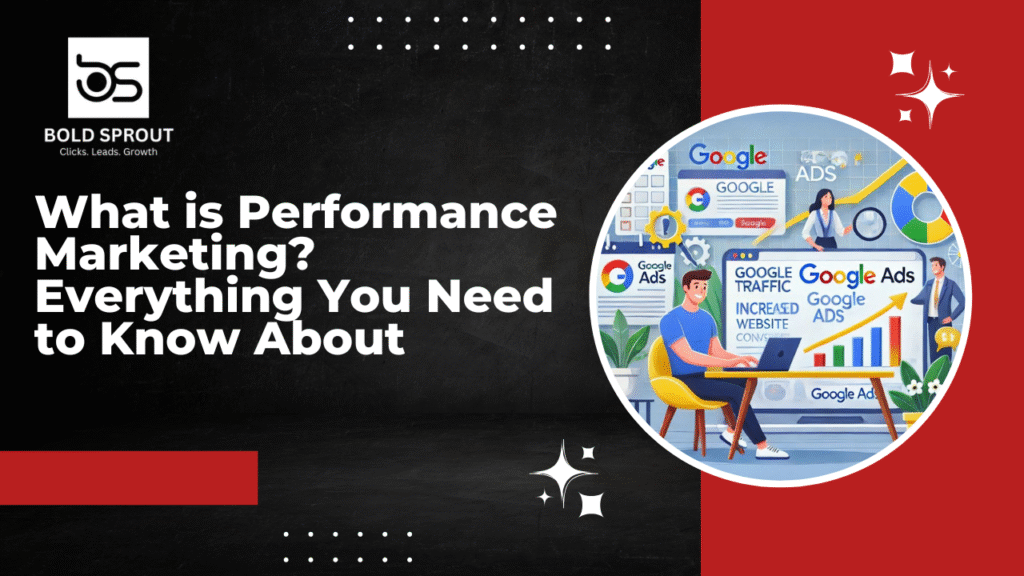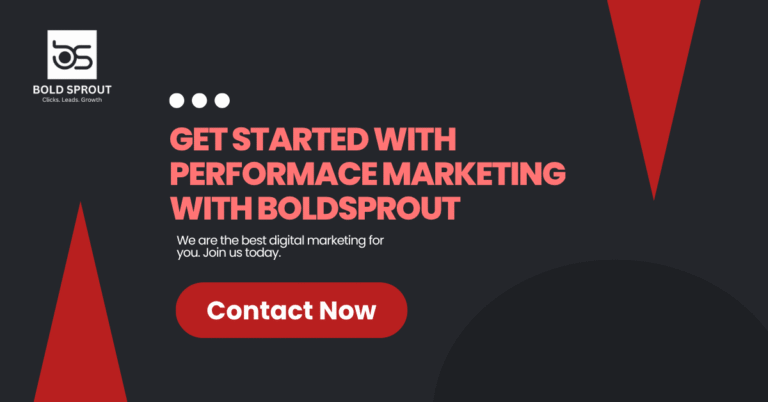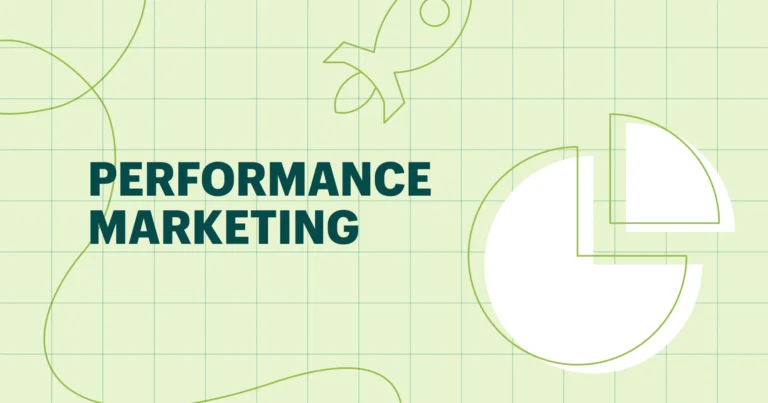
What is Performance Marketing in 2025: A complete guide is here. In the ever-evolving landscape of digital marketing, performance marketing has emerged as a results-driven powerhouse. Unlike traditional advertising methods where brands pay upfront without guaranteed results, performance marketing flips the model—brands only pay when a specific action is completed. Whether it’s a click, lead, sale, or app download, every rupee spent is tied directly to a measurable result.
So, what is performance marketing in 2025? It’s the future-focused approach where data, precision targeting, and accountability merge to deliver high ROI campaigns using top performance marketing channels. At BoldSprout Digital Marketing Agency, we understand how critical it is for businesses to see returns on their ad spend. That’s why performance marketing isn’t just a service we offer—it’s a strategic growth engine we fine-tune for every client using best type of performance marketing platform suitable to their business.
This guide about what is performance marketing in 2025 covers everything you need to know—from the four main types of performance marketing to top performance marketing channels to key metrics to track ROI in 2025. You’ll also learn, when to choose performance over organic growth, and how performance marketing compares with long-term organic marketing strategies.
Ready to unlock data-backed digital growth? Let’s explore performance marketing from every angle.
Table of Contents
ToggleWhat is Performance Marketing?
What is performance marketing in 2025 explained in the most straightforward way: it’s a data-driven digital strategy where advertisers pay only when a desired action—such as a click, lead, or sale—takes place. In contrast to traditional marketing, which relies on upfront spending and indirect outcomes, performance marketing ensures that every rupee spent yields m3zeasurable results. This shift is why performance marketing in 2025 has become a preferred choice for brands seeking tangible ROI.
At its core, performance marketing is built on accountability. Businesses no longer guess if their campaigns are working—they know, through real-time data and analytics. In 2025, this approach leverages advanced tracking tools, audience segmentation, and AI to hyper-target users and reduce wasted ad spend. Channels like Google Ads, Facebook Ads, affiliate programs, influencer partnerships, and native advertising are all part of the performance marketing toolkit.
At BoldSprout Digital Marketing Agency, we specialize in crafting campaigns that focus on conversions rather than just impressions. Our goal is not just visibility—but performance. With our expertise, your brand can tap into the true power of digital performance in 2025 and beyond.
In the next section, we’ll break down the four main types of performance marketing channels that drive real results.
Types of Performance Marketing
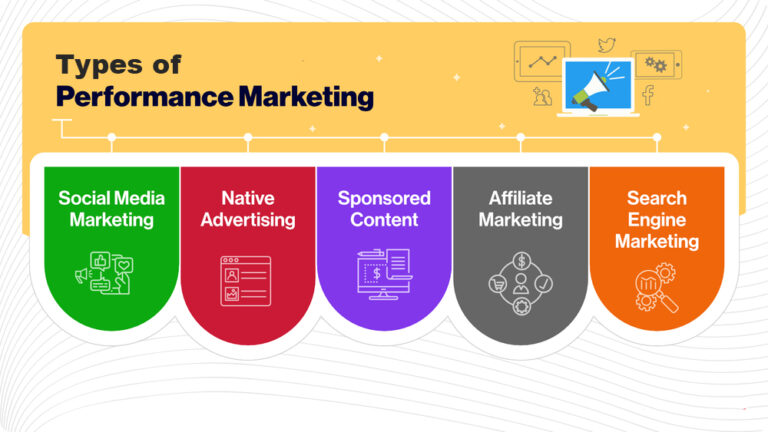
Understanding the four main types of performance marketing channels is essential for building a successful, ROI-focused strategy in 2025. Each type offers unique benefits, allowing businesses to tailor campaigns based on their industry, goals, and audience behavior. The beauty of performance marketing lies in its flexibility—brands only pay when specific actions (clicks, leads, or sales) occur, making every rupee accountable.
1. Affiliate Marketing
Affiliate marketing involves partnering with publishers, bloggers, or content creators who promote your product or service in exchange for a commission per conversion. It’s highly scalable, cost-effective, and best for e-commerce, SaaS, and educational services. You only pay for results, making it a cornerstone of many performance marketing campaigns.
2. Search Engine Marketing (SEM)
Platforms like Google Ads allow brands to appear at the top of search results when users look for relevant keywords. You pay-per-click (PPC), which ensures you’re spending only when someone shows interest. It’s ideal for high-intent lead generation and local service targeting.
3. Social Media Advertising
Running ads on platforms like Facebook, Instagram, LinkedIn, or TikTok allows you to reach specific demographics with detailed targeting. With measurable metrics like CTR, CPA, and ROAS, this type of performance marketing channel offers speed, control, and high engagement.
4. Sponsored Content
Sponsored content is a type of paid content that appears on blogs, websites, or media outlets in a native format. It blends naturally into the platform, offering value while subtly promoting your brand. This type of performance marketing is ideal for storytelling and increasing brand trust while still tracking outcomes like leads and clicks.
5. Native Advertising
This involves placing branded content within articles, blogs, or news websites so it blends with organic content. Native ads often perform well due to their less-intrusive nature and strong content alignment with user interest.
At BoldSprout Digital Marketing Agency, we leverage all four main types of performance marketing channels to build strategies that convert. We choose the right mix based on your niche, goals, and target audience—ensuring you get the highest ROI possible in 2025 and beyond.
Top Performance Marketing Channels
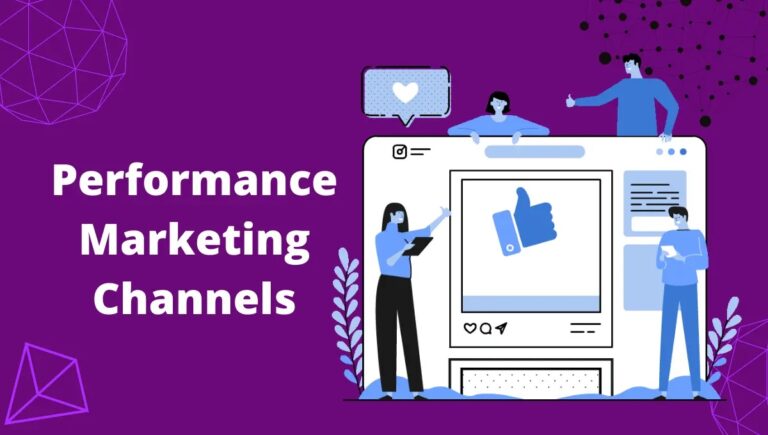
In 2025, choosing the top performance marketing channels is key to building high-ROI campaigns that scale profitably. The digital landscape is evolving, and businesses must adapt to where their audiences spend time and take action. Top performance marketing channels include Facebook Ads and Meta Ads. At BoldSprout Digital Marketing Agency, we believe selecting the right performance channel depends on your goals—whether it’s lead generation, brand awareness, or conversions.
One of the top performance marketing channels in 2025 is Google Ads. It targets users with high purchase intent using keyword-driven PPC campaigns. Whether it’s Search, Display, or Shopping ads, Google Ads delivers measurable results with real-time analytics.
Meta Ads (Ads we run for Facebook & Instagram) also remain powerful in 2025. These platforms allow for advanced audience targeting based on behavior, demographics, and interests. Their visual and interactive nature makes them ideal for e-commerce and service-based industries.
Next is YouTube Marketing—a rapidly growing channel in the performance marketing space. With video content consumption soaring, skippable and non-skippable ads help businesses drive engagement and conversions effectively.
Affiliate networks and influencer marketing also play a strong role. When executed with precision, these can be among the best performance marketing channels 2025 has to offer, providing reach, trust, and conversion power.
Finally, LinkedIn Ads are perfect for B2B businesses targeting decision-makers and professionals. Its targeting options based on job titles, industries, and company size make it uniquely valuable.
At BoldSprout, we assess your audience behavior and campaign goals before recommending the top performance marketing channels in 2025. This ensures every rupee spent drives tangible results and sustainable growth.
How Does Performance Marketing Work?
Understanding how performance marketing works is key to building successful, ROI-driven campaigns in 2025. At its core, performance marketing is a data-driven strategy in which brands pay solely for certain user activities, such as clicks, leads, or purchases. This makes it a low-risk, high-reward approach for businesses seeking growth.
The process begins with setting clear, measurable goals. Whether you want more website traffic, leads, or product sales, the performance marketing model aligns ad spend with outcomes. Once goals are defined, BoldSprout Digital Marketing Agency helps you choose the best performance marketing channels in 2025, such as Google Ads, Meta Ads, or affiliate partnerships.
Next, advanced targeting is applied. Campaigns are built around custom audiences using data like location, behavior, interests, and search intent. Ads are launched, and performance is tracked in real-time using tools like Google Analytics, Meta Pixel, and CRM integrations. If a campaign underperforms, it’s optimized or paused—ensuring your budget is never wasted.
At BoldSprout, we continuously test creatives, audiences, and landing pages to boost performance. Since you’re paying per result, you gain complete control over your ROI. This is how performance marketing works—it’s transparent, scalable, and designed for measurable success in 2025.
Performance Marketing Metrics to Track ROI
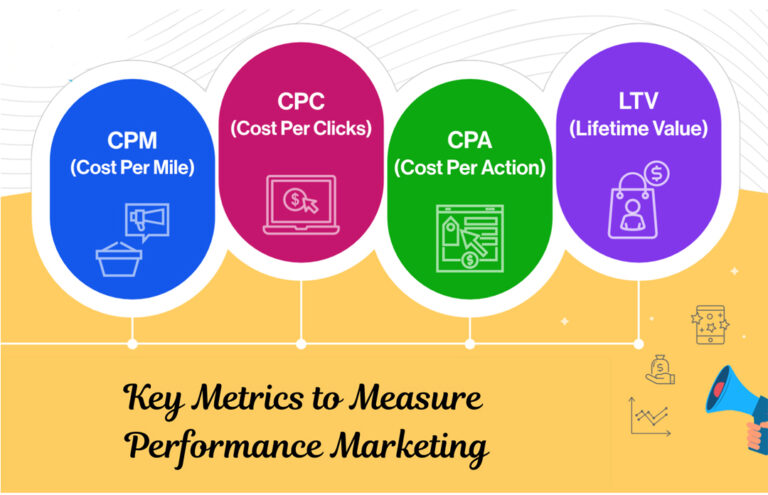
To run successful campaigns in 2025, it’s critical to understand the key performance marketing metrics to track ROI. These metrics help you evaluate what’s working, what needs improvement, and how effectively your ad budget is being spent. Tracking ROI ensures that your marketing efforts are focused on outcomes, not just outputs.
One of the most essential performance marketing metrics to track ROI is Cost Per Acquisition (CPA). It tells you how much you spend to acquire a single customer or lead. Lower CPA means better efficiency. Return on Ad Spend (ROAS) is another crucial metric that compares revenue generated to the amount spent on ads. A ROAS above 3x is often considered healthy, but this can vary by industry.
Other important metrics include Click-Through Rate (CTR), which measures how engaging your ad copy and creative are, and Conversion Rate, which tells you the percentage of users who complete the desired action after clicking the ad. Also valuable is Customer Lifetime Value (CLV), especially for subscription-based or service-driven businesses. Tracking CLV alongside CPA provides a long-term view of profitability.
At BoldSprout Digital Marketing Agency, we use advanced analytics tools like Google Analytics, Meta Business Suite, and CRM integrations to track every stage of the funnel. Our team monitors and reports on these key metrics regularly, allowing us to continuously optimize campaigns for better ROI.
What makes performance marketing truly powerful is this ability to measure everything. By focusing on the right data, brands can make smart, scalable decisions. Whether you’re optimizing for leads, purchases, or app installs, the right performance marketing metrics to track ROI give you the control needed to grow your business with confidence in 2025.
Affiliate vs Influencer Performance Marketing Comparison
When building a modern digital growth strategy in 2025, understanding the affiliate vs influencer performance marketing comparison is key to choosing the right model for your business goals. Both are performance-based strategies, but they function differently and cater to unique audience behaviors.
Affiliate marketing focuses on partnering with publishers, bloggers, or website owners who promote your product or service through links, banners, or email campaigns. Affiliates are paid a commission only when a predefined action—like a sale or signup—occurs. This model is ideal for scaling campaigns without upfront risk. It works especially well for tech products, SaaS, eCommerce, and digital courses, where conversions are easily trackable.
Influencer marketing, on the other hand, leverages individuals with a loyal and engaged following on platforms like Instagram, YouTube, or LinkedIn. These influencers promote your brand through content—such as posts, stories, or videos—and drive traffic or conversions through trackable links or discount codes. Influencer performance marketing is perfect for lifestyle, fashion, beauty, health, and consumer-focused brands that benefit from storytelling and visual engagement.
At BoldSprout Digital Marketing Agency, we help businesses decide between affiliate and influencer models based on their niche, goals, and target audience. In some cases, we combine both strategies for optimal performance. Our influencer campaigns focus on authenticity and reach, while affiliate strategies prioritize scale and ROI.
The core of the affiliate vs influencer performance marketing comparison lies in reach vs trust. Affiliates often drive traffic through SEO and content marketing, while influencers offer trust, engagement, and brand credibility. By understanding your audience’s behavior and matching it to the right marketing partner, you can boost conversions significantly.
BoldSprout builds, tracks, and optimizes both types of campaigns—ensuring you only pay when results are delivered.
When to Use Performance Marketing vs Organic
Knowing when to use performance marketing vs organic growth is essential for building a smart, sustainable digital strategy in 2025. Both approaches offer value, but each serves different goals and timelines. Performance marketing delivers fast, trackable results, while organic marketing focuses on long-term brand credibility and consistent growth.
Performance marketing is best when you need quick results—like launching a product, running a limited-time offer, or scaling lead generation fast. Because you only pay for actions like clicks, form fills, or purchases, it’s ideal for businesses seeking immediate ROI. Platforms like Google Ads, Instagram Ads, and affiliate partnerships are perfect examples of where this model thrives. At BoldSprout Digital Marketing Agency, we recommend performance campaigns when your goal is short-term conversions and data-driven growth.
On the other hand, organic marketing—including SEO, content marketing, and social media engagement—takes time but builds trust and authority. It’s the right strategy when you’re aiming for sustained online visibility, improved domain ranking, and audience loyalty. It also supports brand storytelling and customer relationship building.
The smart approach is not choosing one over the other but integrating both. Knowing when to use performance marketing vs organic growth allows businesses to maximize results. Use performance marketing for immediate goals and organic strategies for long-term presence. At BoldSprout, we craft hybrid models that align with your business objectives—ensuring a balanced, high-performing digital presence in 2025.
How BoldSprout Crafts ROI-Focused Campaigns for Businesses
At BoldSprout Digital Marketing Agency, we specialize in creating ROI-focused performance marketing campaigns that deliver measurable business outcomes. In 2025, brands can no longer afford to invest in marketing strategies that don’t provide clear returns. That’s where our data-driven approach to performance marketing becomes a game-changer.
Our process begins with a thorough understanding of your business objectives, target audience, and industry landscape. We then craft a custom strategy using the best performance marketing channels in 2025—whether that’s Google Ads, Facebook Ads, affiliate networks, or native advertising platforms. Every campaign we run is built with performance in mind, ensuring you pay only when results are delivered.
Once live, we track critical performance marketing metrics to track ROI in 2025, such as cost-per-acquisition (CPA), return on ad spend (ROAS), click-through rates (CTR), and conversion rates. These metrics allow us to optimize your campaigns in real time, improving efficiency and increasing profit margins.
At BoldSprout, transparency is our core principle. You receive detailed performance reports and strategic recommendations regularly. Our team continually tests creatives, ad placements, and audiences to improve campaign effectiveness.
Our promise? To turn every rupee you invest into a data-backed, revenue-generating result. That’s the BoldSprout way—performance marketing with purpose, precision, and proven ROI in 2025.
Final Thoughts: The Future of Performance Marketing
As we move deeper into the digital age, performance marketing in 2025 is proving to be more than just a trend—it’s a strategic necessity. Businesses today cannot afford to waste resources on campaigns that don’t deliver clear, measurable results. That’s why understanding the fundamentals—from the four main types of performance marketing channels to selecting the best performance marketing channels in 2025—is critical for success.
Whether you’re launching a new product, scaling your brand, or targeting specific KPIs like cost-per-acquisition (CPA) or ROAS, performance marketing empowers you with control, visibility, and efficiency. But it’s equally important to know when to use performance marketing vs organic growth so you can strike the perfect balance between immediate conversions and long-term brand building.
At BoldSprout Digital Marketing Agency, we craft unique strategies according to the business. Our team of experts builds customized, ROI-focused campaigns that blend data, creativity, and real-time optimization. From affiliate to influencer marketing, from Google Ads to Meta platforms, we design solutions tailored to your business goals and industry demands.
In a world driven by data and performance, your digital strategy should be just as smart. Partner with BoldSprout to unlock the full potential of performance marketing in 2025—where every click, lead, and conversion adds meaningful value to your bottom line.
Frequently Asked Questions
Performance marketing is a results-driven digital strategy where advertisers only pay when a specific action is completed—such as a click, lead, or sale. Unlike traditional marketing, where you pay upfront for impressions or ad space regardless of results, performance marketing ensures accountability and clear ROI. Traditional advertising is often harder to track and usually focuses on brand awareness over time. In contrast, performance marketing is built around measurable outcomes and real-time data. This model allows businesses to scale their marketing efforts efficiently while minimizing waste. In 2025, performance marketing leverages advanced analytics, AI targeting, and automation to fine-tune campaigns continuously. It’s ideal for businesses looking for rapid growth, precise targeting, and transparency. With the right partner like BoldSprout Digital Marketing Agency, businesses can maximize returns while staying agile in a competitive digital space.
The four main types of performance marketing channels in 2025 are: affiliate marketing, search engine marketing (SEM), social media advertising, and native advertising. Affiliate marketing involves partnerships where third parties promote your products and get paid for each conversion. SEM platforms like Google Ads allow businesses to pay per click, showing ads to users actively searching for related products or services. Social media advertising on platforms like Facebook, Instagram, and LinkedIn offers detailed targeting based on behavior, interests, and demographics. Native advertising integrates sponsored content within platforms like blogs or news sites for seamless user engagement. These channels are not only cost-effective but also provide detailed performance data, helping marketers optimize in real-time. At BoldSprout, we help you choose the most relevant mix of channels based on your business goals to ensure every campaign delivers maximum ROI.
Performance marketing and SEO (organic marketing) serve different but complementary purposes. Performance marketing is great for quick results, such as generating leads or driving sales immediately. It works best when launching a product, running limited-time promotions, or scaling user acquisition. On the other hand, SEO focuses on long-term growth, building authority, and driving consistent, unpaid traffic through search engines. While SEO takes time to show results, it provides sustainable visibility and higher trust. Neither is “better” universally—it depends on your business goals. The ideal approach is combining both. You use performance marketing for instant growth and SEO for long-term positioning. At BoldSprout Digital Marketing Agency, we often build hybrid strategies where paid campaigns bring fast ROI, while organic efforts support brand trust and ranking. Together, they create a comprehensive, future-ready digital marketing strategy that drives both immediate and sustainable success.
The cost of performance marketing in 2025 depends on several factors: your industry, the platforms you use, your campaign goals, and the competition for your target audience. Unlike traditional marketing, performance marketing is not a fixed-cost model. You pay only when a desired action is taken—such as a click (CPC), lead (CPL), or sale (CPA). For example, performance marketing cost per acquisition examples 2025 might range from ₹100–₹1000 per lead in the education sector, or ₹50–₹500 per sale in e-commerce, depending on targeting and offer quality. The key benefit is cost control—you set budgets and optimize campaigns in real-time. At BoldSprout, we create custom strategies that align with your ROI goals. We monitor performance continuously and adjust to ensure you spend efficiently while achieving maximum results. Transparent pricing, performance tracking, and real-time optimization are at the core of what makes performance marketing so effective in 2025.
Performance marketing is effective across many industries, especially where digital actions can be tracked and monetized. E-commerce, education, real estate, health & wellness, SaaS, fintech, and local service providers benefit the most. For example, e-commerce brands can quickly scale product sales through targeted ads and retargeting. Education consultancies can generate qualified leads using performance-based Facebook and Google campaigns. Real estate companies can use performance marketing to drive inquiries and site visits. Even local businesses like salons or gyms can benefit by targeting nearby users with geo-specific ads. The key is measurable action—if your business can define a conversion (click, lead, sale), performance marketing can optimize for it. At BoldSprout, we build customized campaigns for each industry, using the right mix of channels and metrics to ensure results. In 2025, any business looking for scalable growth and data-backed decision-making should consider performance marketing.
Measuring ROI in performance marketing involves tracking key metrics that reflect campaign performance. The most important metrics in 2025 include Cost Per Acquisition (CPA), Return on Ad Spend (ROAS), Click-Through Rate (CTR), Conversion Rate, and Customer Lifetime Value (CLV). These metrics show how effectively your ads are converting and what returns you’re getting for your investment. For example, if you spend ₹10,000 and earn ₹50,000 in revenue, your ROAS is 5x. Tools like Google Analytics, Meta Pixel, CRM dashboards, and third-party analytics platforms help track these metrics in real-time. At BoldSprout Digital Marketing Agency, we create custom dashboards for clients, providing full visibility into performance. We constantly A/B test creatives, placements, and targeting to optimize ROI. By monitoring data and adjusting strategies accordingly, we ensure your campaigns not only meet but exceed expectations—making your ad spend more of an investment than an expense.
Affiliate marketing and influencer marketing are both types of performance marketing, but they operate differently. Affiliate marketing involves partners (affiliates) promoting your product through blogs, websites, or email campaigns. They earn a commission only when a specific action—like a sale or lead—is completed. It’s a scalable, long-term model that focuses on conversions.
Influencer marketing, on the other hand, leverages individuals with a loyal following on platforms like Instagram, YouTube, or Twitter. In influencer performance marketing, the brand tracks performance via promo codes or affiliate links. Influencers may charge per post or per result, depending on the agreement.
In 2025, both strategies are highly effective when used correctly. Affiliate marketing suits mass-market and SEO-driven growth, while influencer campaigns are ideal for storytelling, product launches, or niche targeting. At BoldSprout, we help clients decide between affiliate vs influencer performance marketing comparison models based on goals, audience behavior, and campaign objectives.
One of the biggest advantages of performance marketing is speed. You can start seeing results within days or even hours, depending on the platform and campaign setup. For instance, a well-optimized Facebook or Google Ads campaign can start driving clicks and conversions shortly after launch. However, the timeline for meaningful ROI depends on factors like your industry, offer strength, audience targeting, and budget. Generally, most businesses see measurable performance within 1–4 weeks after consistent testing and optimization.
At BoldSprout, we typically break performance campaigns into phases—testing, optimizing, and scaling. The initial testing phase helps us identify the best-performing creatives, placements, and audience segments. Then we fine-tune your campaigns based on real-time performance data. By month one, most clients are already achieving positive ROI, with stronger returns as we scale. With performance marketing, the focus is on constant improvement, and with expert management, results compound quickly.
Successful performance marketing strategies are those that align closely with business goals and are optimized for results. Examples include:
- Lead generation campaigns for education brands, where ad copy and landing pages are customized to increase form fills.
- Retargeting ads for e-commerce stores, showing personalized product ads to users who visited but didn’t purchase.
- Affiliate partnerships in SaaS or digital products, where affiliates are paid per sign-up or subscription.
- Search ads for real estate or local services, targeting high-intent users with location-based keywords.
At BoldSprout Digital Marketing Agency, one strategy we often use involves combining Meta Ads with email marketing and retargeting for maximum lifecycle value. Another involves influencer-led campaigns with trackable discount codes. These strategies are data-driven, tested continuously, and optimized for high ROI. The key to success lies in understanding your audience, using the right platform, and measuring results in real-time.
BoldSprout Digital Marketing Agency is more than just a service provider—we’re your strategic growth partner. Our approach to performance marketing in 2025 is grounded in data, creativity, and accountability. We don’t run ads for the sake of traffic; we build intelligent campaigns that deliver real business outcomes like leads, sales, and ROI.
What sets BoldSprout apart is our personalized attention. Every client gets a custom strategy tailored to their goals, industry, and budget. We use the best performance marketing channels in 2025—like Google Ads, Meta Ads, and influencer networks—backed by advanced analytics and AI targeting.
From setup to scaling, our team handles everything—copywriting, creative, tracking, A/B testing, and optimization. Plus, you get clear reporting, dedicated support, and complete transparency. If you’re looking for performance without guesswork, results without delay, and growth without limits, BoldSprout is the partner you need in today’s competitive digital landscape.

